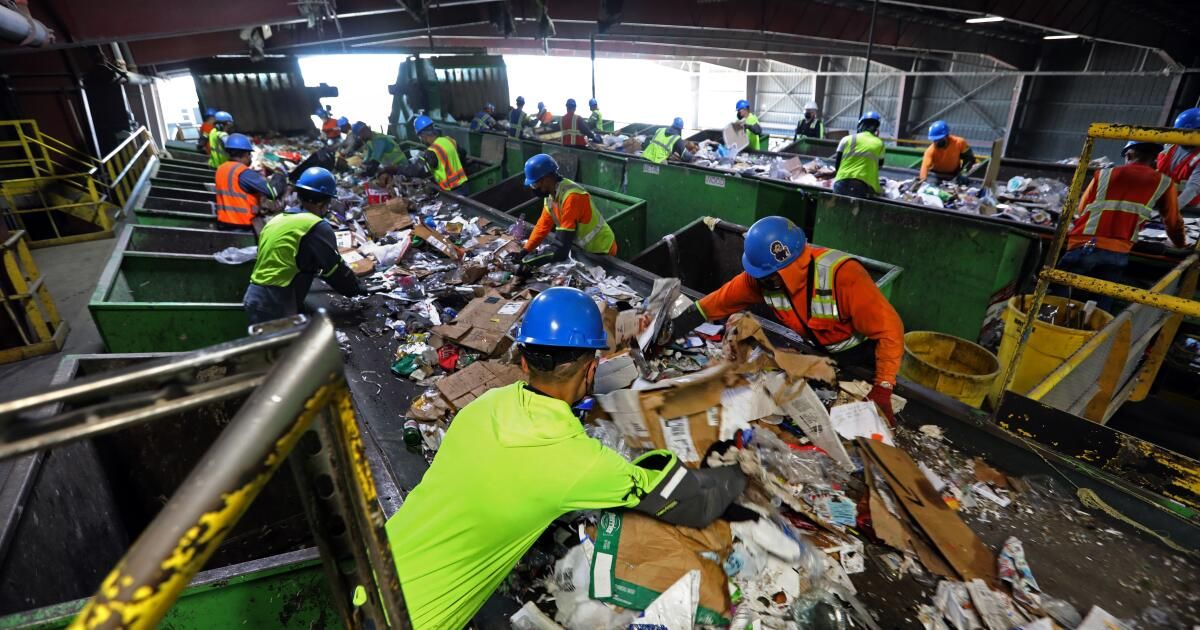They are used to give plastic products their distinctive durability, flexibility and sleek, non-stick surface.
However, some of these chemical additives have been linked to diseases such as breast and prostate cancer, heart disease and diabetes, as well as problems with brain development in children and fertility in adults.
Of particular concern is a class of additives known as endocrine disruptors, chemicals that mimic and confuse hormonal signaling in humans.
Aggressive and impactful reporting on climate change, the environment, health and science.
Now, a team of doctors, epidemiologists and endocrinologists has estimated the costs of plastic exposure on the US healthcare system and reached a sobering conclusion.
In 2018, several common endocrine disruptors cost the nation nearly $250 billion, just $40 billion less than Governor Gavin Newsom's proposed 2024 budget for the entire state of California.
“This study really aims to put a clear, bold line behind the fact that plastics are a human health problem,” said Leo Trasande, a pediatrician and public policy expert at the Grossman School of Medicine and the Wagner School of Public Service. New York University.
“Basically, we're talking about effects that span the entire study of life, from brain development in young children… to cancer,” he said.
The study was conducted by researchers from New York University, Children's Hospital of Philadelphia and Defend Our Health, an environmental organization based in Portland, Maine.
Using epidemiological and toxicity data, the researchers detailed the disease burden of a collection of fairly well-studied chemicals, including bisphenol A (BPA), phthalates, a class of flame retardants known as PBDEs, and PFOAs, the ” permanent chemicals” used to make nonstick cookware and have been found in nearly half of U.S. tap water samples tested by the federal government.
They used previously published cost data on selected disease burdens to arrive at their estimate, which Trasande described as “conservative.”
He and Avi Kar, senior attorney and senior director of the Health, Food, People and Communities Program at the Natural Resources Defense Council, said there are tens of thousands of chemicals used in plastic production and manufacturing that likely also contribute. to negative health problems, but for which the available data are scarce.
“Even from a health perspective, these are likely underestimates,” said Kar, who was not involved in the research. He noted that “in addition to the costs associated with chemicals and plastics, there are health costs associated with exposure to macro- and microplastics, as well as the pollution associated with their production and disposal.”
Kar and Trasande said that while research into the effect of micro- and nanoplastics on the human body is still in its early stages (they have been found in our brains, lungs, hearts and blood), there is a large body of research on these chemical additives.
News that we may be ingesting hundreds of thousands of nanoplastic particles Every time we drink a liter of water bottled in plastic, it worries researchers, not so much because of the plastic itself, but because these chemicals settle on those particles “like a passenger pigeon,” managing to enter our cells and brains without restrictions. Trasande said. .
“Apart from the plastic polymer itself, the chemicals associated with plastic can pose a health risk, if not a greater health risk, as they are encapsulated or attracted to these plastic materials,” said Vahitha Abdul Salam, senior lecturer. of vascular pharmacology at Queen Mary University of London.
It noted that there are no standard risk assessment measures available for plastics or chemicals associated with plastics, which is why it is working in collaboration with others, such as the UK's WRc Group, a water consulting company, “to identify and quantify the amount and types of plastics and their associated chemicals in water systems and verify the potential harm of top 10 materials/chemicals to human health using cell-based assays.”
In the meantime, Trasande and others are hopeful that their work will be recorded by lawmakers and prompt them to consider the financial and health costs of plastic waste on the environment and humans.
Kar said his work adds to a body of similar analyses, including published by the Minderoo-Monaco Commission on Plastics and Human Healthan international coalition of researchers and doctors funded by the Minderoo Foundation and the United Nations Environment Programme.
“What this study tries to do is tell” plastic manufacturers that “it's not just that they are harming people's lives, but that they are costing the economy. …As companies, they are benefiting from people's health and well-being,'” he said.












